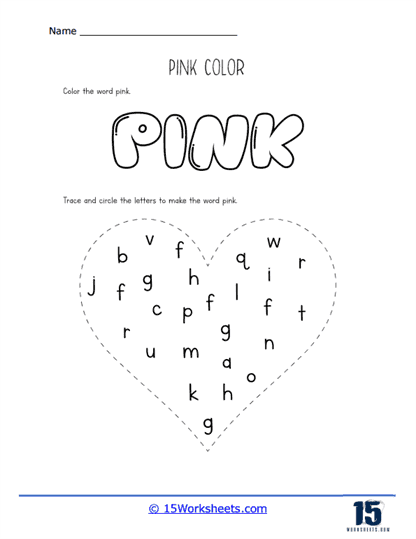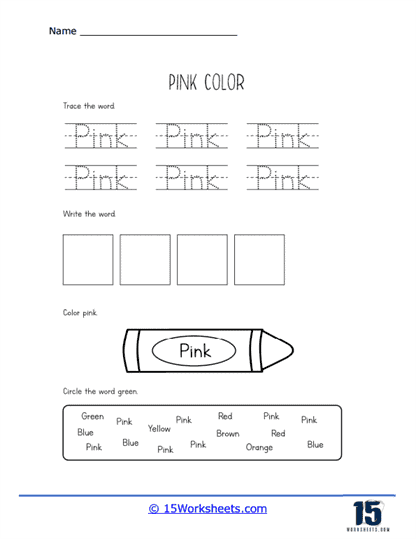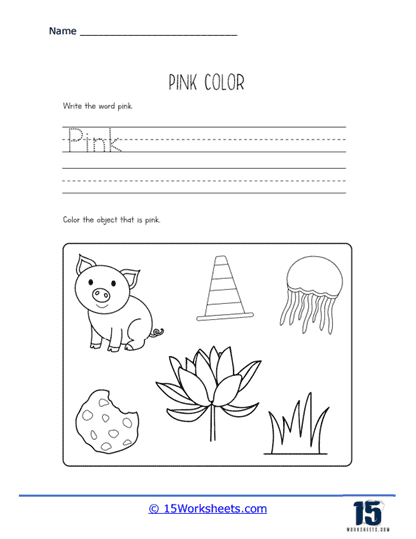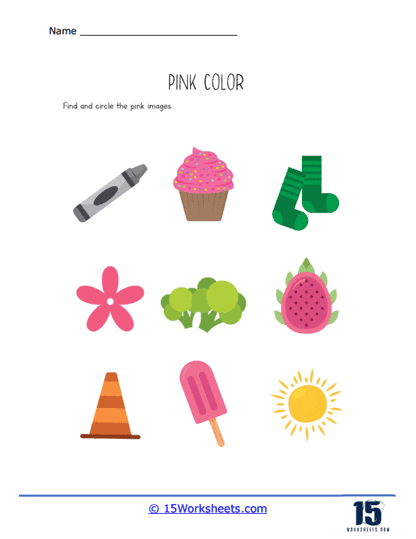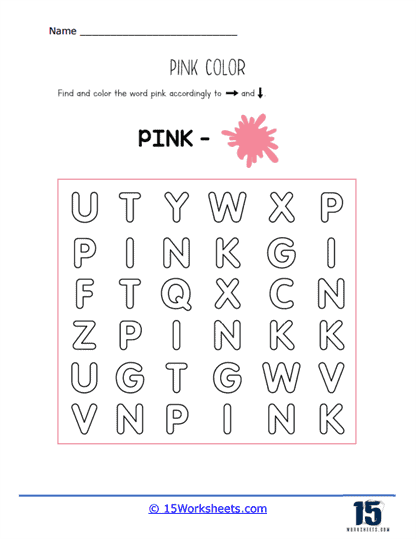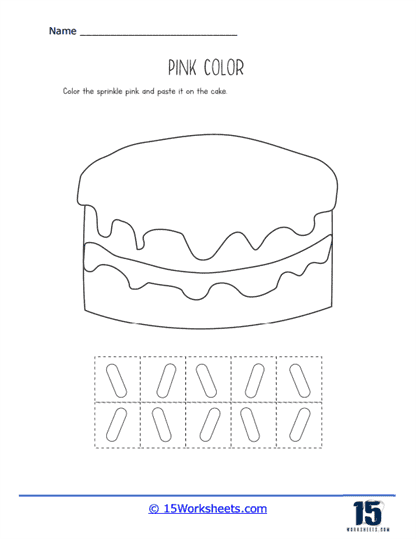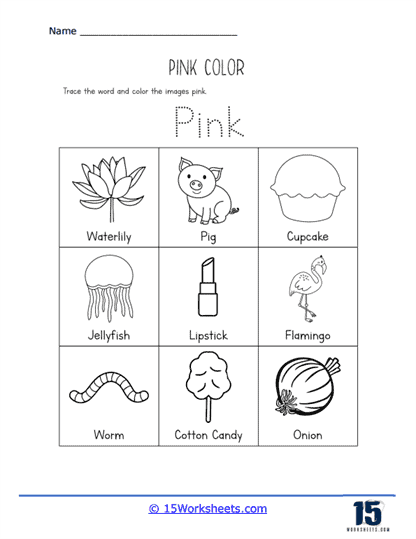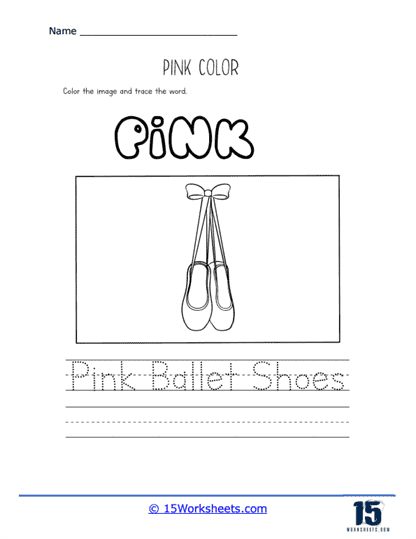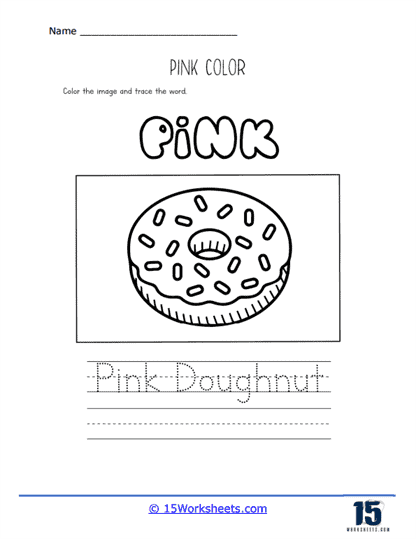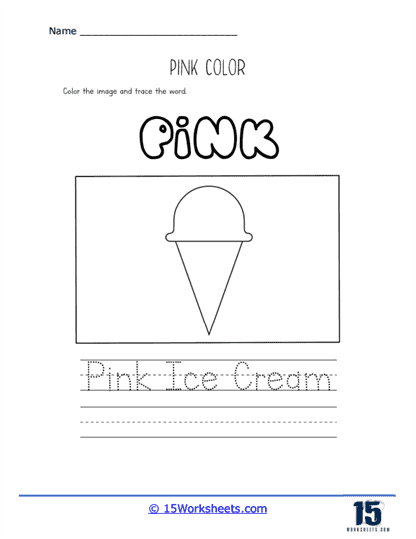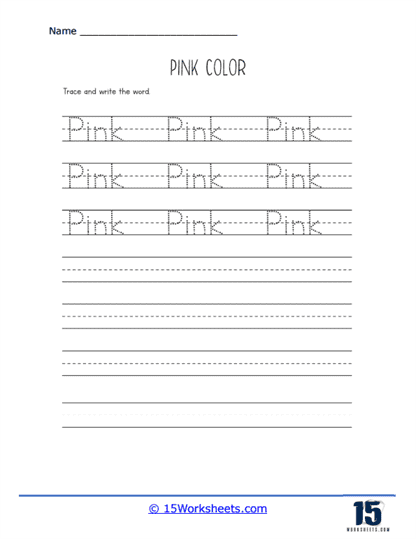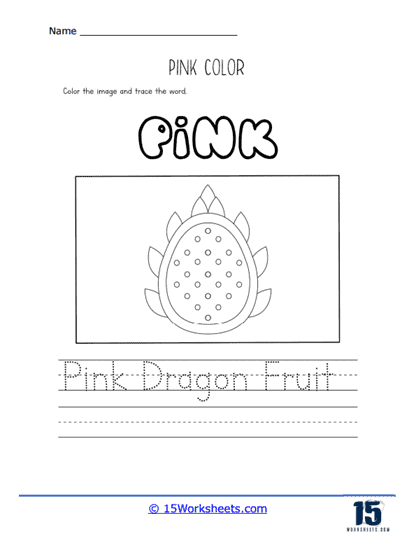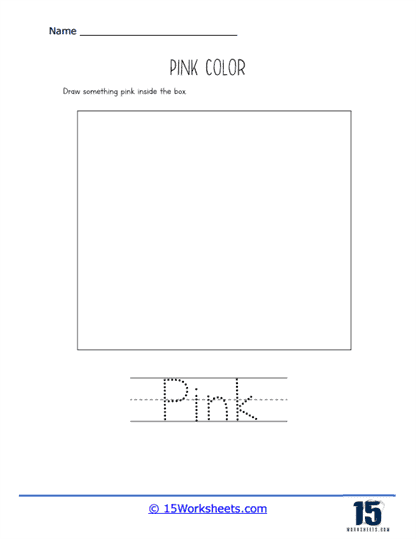Pink Worksheets
All About These 15 Worksheets
Step into the delightful world of pink with this thoughtfully crafted series of Kindergarten worksheets, designed to introduce young learners to the magic of colors, with a special focus on the vibrant and playful shade of pink. These worksheets are more than just exercises; they offer an immersive learning experience that nurtures curiosity, creativity, and critical thinking in children. By making the color pink the center of attention, this collection ensures that young minds not only learn to recognize the color but also explore its many associations and meanings in the world around them.
Through a diverse range of interactive activities, children will develop a deep familiarity with pink, strengthening their visual discrimination skills while enhancing their language and fine motor abilities. As students embark on this colorful journey, they will engage in activities such as identifying and coloring objects that are pink, helping to solidify their understanding of the color. This simple yet effective approach ensures that children not only learn to recognize the color but also understand its role in everyday life, from pink flowers in a garden to pink balloons at a party. Each activity reinforces the idea that colors are an essential part of how we experience the world, sparking a sense of wonder in the students.
Beyond just recognizing the color, students will practice tracing and writing the word “pink.” This exercise does more than promote letter formation; it fosters early literacy skills as children learn to connect the written word with the visual representation of the color. The tactile act of tracing helps solidify the connection between sight, sound, and movement, a critical step in early language development. As students grow more confident, they will move from tracing to independently writing the word, building both their fine motor skills and their vocabulary.
In addition to learning about the color itself, students will be introduced to objects and symbols commonly associated with pink. This expands their vocabulary and fosters cognitive connections between words and visual elements, enriching their understanding of language and the world. Whether it’s a pink pig, a heart symbolizing love, or a delicate pink flower, these associations help children see how colors can evoke emotions, symbolize ideas, and represent aspects of the world they are just beginning to explore.
This series of worksheets goes beyond basic color recognition by encouraging hands-on exploration, problem-solving, and cognitive development. Each activity is designed to engage children’s minds and hands, whether they’re coloring, tracing, or thinking about how pink objects fit into larger categories. By providing opportunities for active participation, these exercises promote a love for learning, sparking excitement and curiosity that will carry over into future explorations of colors and concepts.
These activities are designed to foster creativity, giving students the freedom to express themselves through color. As they draw, color, and imagine, children are developing not just their fine motor skills but also their ability to think critically and creatively. This creative freedom is essential for their overall development, helping them to become confident, independent thinkers who see the world as a canvas for their ideas and imagination.
This comprehensive collection of pink-themed worksheets is more than just a tool for teaching color recognition-it’s a foundation for a lifelong appreciation of art, creativity, and self-expression. By engaging with these exercises, young learners will develop a deep understanding of colors and how they relate to the world around them, all while building the skills that will serve them in reading, writing, and creative problem-solving. The journey into the world of pink is just the beginning, laying the groundwork for future exploration of the rainbow of colors that make life vibrant and exciting.
What You Should Know About the Color Pink
Pink is a delicate and soothing color that represents a lighter tint of red. It is created by mixing red with varying amounts of white, resulting in a spectrum of shades from soft pastels to vibrant, bold hues. Pink is often associated with feelings of love, compassion, and tenderness, as well as innocence and playfulness. In some cultures, pink is considered a feminine color and is strongly linked to women and girls, although this association has evolved over time and is not universal.
Throughout history, artists have used pink pigments derived from natural sources, such as rose madder and cochineal, as well as synthetic pigments like quinacridone and dioxazine. In art and design, pink is often employed to evoke emotions of warmth, calmness, and romance. It is frequently used in various mediums, including paintings, textiles, and graphic design, to create visually appealing and harmonious compositions. Pink can be paired with a wide range of colors, like grey, white, or complementary colors like green, to create aesthetically pleasing color schemes.
In nature, pink can be found in a variety of elements, such as flowers, sunsets, and minerals. Many flowers, including roses, peonies, and cherry blossoms, display pink hues, while sunsets often showcase soft pink gradients. Minerals like rose quartz and rhodochrosite exhibit pink coloration, making them popular in jewelry and decorative items. Some animals, like flamingos, display pink plumage, which results from their diet of pigmented food sources like shrimp and algae.
In fashion, pink has been popular across different eras and styles, ranging from elegant haute couture to casual streetwear. The color has been embraced by both men and women, with the perception of pink as a feminine color shifting over time. Pink ribbons have become an international symbol for breast cancer awareness, with various organizations and campaigns utilizing the color to raise funds and promote education about the disease.
In science and technology, pink pigments and dyes have been developed for use in paints, inks, and textiles. The color is also used in lighting, with pink neon signs and LEDs being employed in various applications, such as advertising and entertainment.
Pink is a versatile, delicate color with a wide range of symbolic meanings, cultural associations, and applications in art, design, fashion, and technology. Its presence in nature, as well as its connection to love, compassion, and innocence, make it a powerful and influential color in many aspects of human life.

